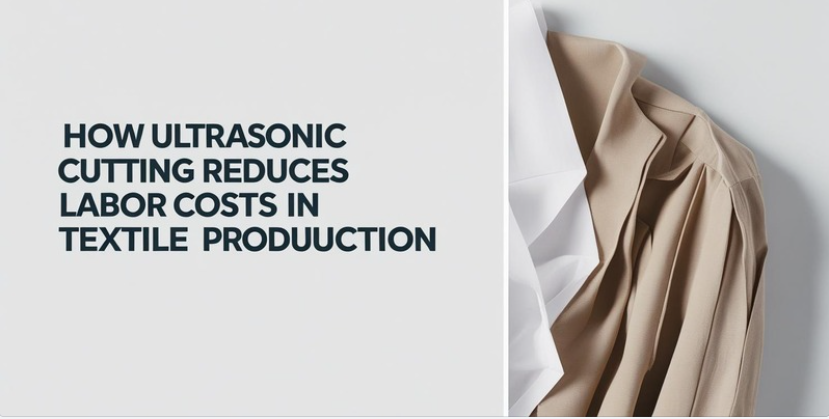Setting Up Your First Ultrasonic Sewing Station - Beginner's Guide
- ztzgsteeltech
- Jul 8
- 4 min read

The textile and garment industry is witnessing a transformative shift with the rise of ultrasonic sewing technology. Whether you're producing nonwoven medical textiles, activewear, or industrial garments, ultrasonic sewing machines offer unmatched speed, precision, and cleanliness—without the need for thread, needles, or adhesives.
If you're new to the field, setting up your first ultrasonic sewing station may seem daunting. But don’t worry! This beginner’s guide walks you through everything you need to know to get started efficiently, safely, and profitably.
What is Ultrasonic Sewing?
Ultrasonic sewing uses high-frequency vibrations to create strong, seamless bonds between synthetic fabrics—such as polyester, nylon, polypropylene, and PVC—without the need for thread. This solid-state joining process ensures durable, waterproof, and clean seams ideal for hygiene products, filters, outdoor wear, and more.
Why Choose Ultrasonic Sewing Over Traditional Methods?
Before diving into the setup process, it’s important to understand why ultrasonic sewing machines are gaining popularity across industries:
No thread or needles required
Seamless, strong, and consistent bonding
Minimal maintenance and consumables
Eco-friendly with zero chemical adhesives
Ideal for nonwoven and technical fabrics
ZrinTech, a brand known for engineering precision ultrasonic machines, offers a diverse range of models tailored for different fabrics, seam types, and production scales. If you're building a station from scratch, their ultrasonic sewing machine collection is a reliable starting point to explore machine types and configurations.
Essential Components of an Ultrasonic Sewing Station
To create an efficient ultrasonic sewing station, you’ll need to assemble several key components:
1. Ultrasonic Sewing Machine
Choose a model based on your production needs—manual, semi-automatic, or fully automatic. Machines differ in:
Power rating (200W to 2000W+)
Welding speed
Wheel design and pattern
Frequency (commonly 20kHz or 35kHz)
For example, come pre-calibrated for consistent bonding and feature touchscreen controls for precise parameter adjustments.
2. Worktable or Mounting Surface
Your machine should be mounted on a stable, vibration-dampening table with adequate surface space for feeding material smoothly. Consider ergonomics for the operator—adjustable height tables are a plus.
3. Material Handling System
Depending on your fabric and production flow, you may need:
Roll holders for feeding fabric
Edge guides or tracking sensors
Cutters or trimming modules for finishing
For higher volumes, an inline material unwinder or synchronized roller system ensures consistent tension and alignment.
4. Power Supply & Air Compressor
Ultrasonic machines require a clean, stable power source. Ensure your workspace has:
Dedicated power outlets
Voltage regulators or stabilizers
Clean, dry compressed air (for pneumatic models)
Install an air compressor with a filter system to avoid contamination and ensure efficient horn operation.
5. Safety Measures and PPE
Ultrasonic machines operate at high speeds and frequencies. Protect your workspace with:
Operator shields or covers
Emergency stop buttons
Hearing protection (if working in close proximity for long periods)
Safety signage and training guides
Steps to Set Up Your Ultrasonic Sewing Station
Step 1: Choose the Right Machine
Select a machine based on:
Fabric type (nonwoven, knit, synthetic)
Seam strength requirements
Desired bonding pattern
Automation level
For versatile use, start with a general-purpose ultrasonic sewing machine capable of flat seams and edge welding.
Step 2: Prepare the Workspace
Clear a dedicated, dust-free area for your station. Maintain:
Ambient temperature (18–24°C)
Low humidity (below 60%)
Proper lighting for precision work
Make sure to allow easy access to all machine controls, feed paths, and maintenance areas.
Step 3: Mount and Connect
Install the machine on the worktable and connect:
Electrical power
Air compressor (if required)
Material feed systems (manual or automated)
Check alignment between the ultrasonic horn and the anvil wheel. A misaligned setup can result in poor bonding or material damage.
Step 4: Calibrate and Test
Set initial parameters:
Amplitude: Determines how much vibration is applied.
Pressure: Controls the force between the horn and anvil.
Speed: Affects welding duration and quality.
Run test samples using scrap fabric. Adjust settings gradually until you achieve the desired bond strength, appearance, and finish.
Step 5: Train Operators
Even with automation, operator training is vital. Teach users to:
Recognize good vs. poor welds
Adjust parameters as needed
Handle material feeding and maintenance
Follow safety protocols
A trained operator ensures consistent quality and minimizes downtime.
Maintenance Checklist for Long-Term Reliability
Like all precision equipment, ultrasonic sewing machines need routine upkeep. Here’s a quick checklist:
Task | Frequency |
Clean horn and anvil | Daily |
Check horn alignment | Weekly |
Inspect power cables | Weekly |
Lubricate moving parts | Monthly |
Replace air filters | Monthly |
Full inspection/service | Every 6 months |
These machines are designed with easy-access components and intuitive diagnostics, making regular maintenance a breeze.
Optimizing Production with Add-Ons
Once you’ve got the basics in place, consider upgrading with:
Pattern wheels for decorative or sealed seam designs
Automated feeders for large rolls or multiple layers
Edge sensors for precise alignment
Digital counters and QC integrations for production monitoring
As your operation grows, these add-ons can significantly increase output without compromising quality.
Conclusion: Starting Strong with Ultrasonic Sewing
Setting up your first ultrasonic sewing station may seem technical, but with a structured approach, it becomes a smooth and rewarding process. Whether you’re producing medical textiles, nonwoven hygiene products, or waterproof outerwear, ultrasonic technology offers unmatched benefits in speed, cleanliness, and precision.
Remember, the machine is only part of the equation—proper setup, calibration, and operator training make all the difference. Start with reliable equipment from brands like ZrinTech, whose ultrasonic sewing solutions are tailored for both beginners and experienced manufacturers.
For those still exploring equipment options, the ultrasonic sewing machines collection is the perfect place to begin evaluating machines suited to your production goals.



Comments